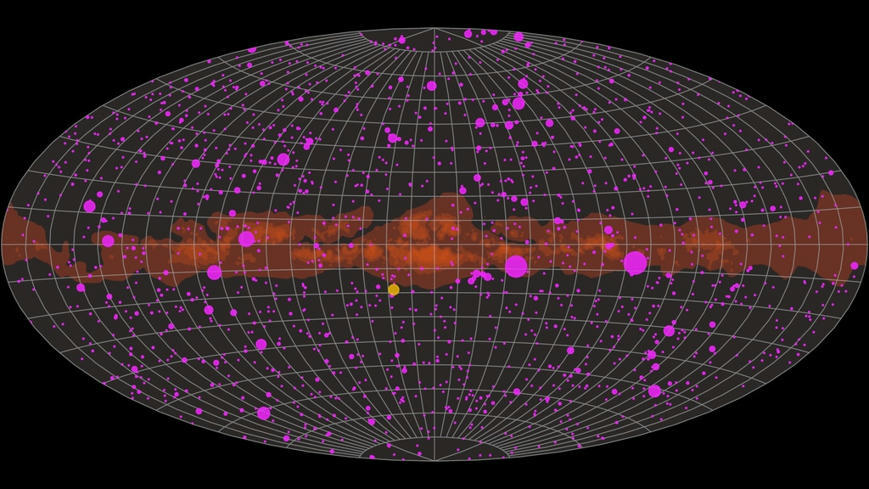
Most of the gamma ray sources in this animation are blazars, supermassive black holes with relativistic jets pointed at Earth.
We’ve come a long way since gamma rays were discovered.
The late 1800s and early 1900s were a time of great scientific advancements. Scientists were just getting a handle on the different types of radiation. Radium featured prominently in the experiments, including one by French scientist Paul Ulrich Villard in 1900.
Radium decays readily, and scientists had already identified alpha and beta radiation coming from radium samples. But Villard was able to identify a third type of penetrating radiation so powerful even a layer of lead couldn’t stop it: gamma rays.
Now we have a gamma ray detector in space, and it’s showing us how the Universe sparkles with this powerful energy. Gamma rays are the most energetic form of light in the Universe, and as a new animation shows, the sky practically sparkles with flickering gamma-ray sources. The animation contains a year’s worth of observations from the Large Area Telescope (LAT) on NASA’s Fermi Gamma-ray Space Telescope. Each yellow circle is a gamma-ray source, and the expansion and contraction show how the source brightens and dims. The yellow circle is the Sun’s following its seemingly sinusoidal path relative to Earth.
The animation represents an entire year of observations. Each frame in the animation represents three days. The reddish-orange band that runs through the middle of the animation is the Milky Way’s central plane, which is a consistent gamma-ray producer.
Read the full article at: www.universetoday.com